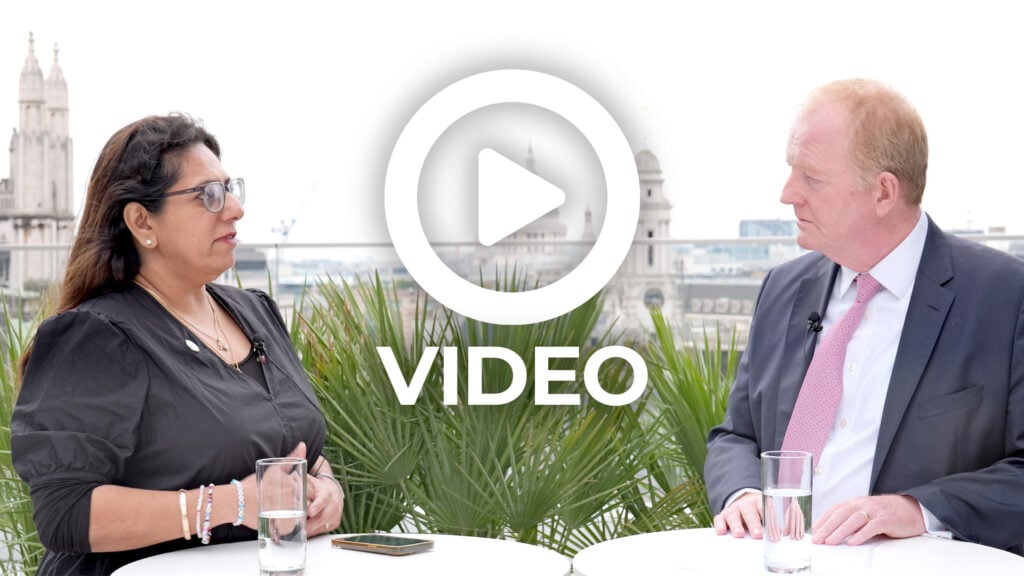Logistics face a bumpy road in the COVID-19 vaccine rollout
The unprecedented vaccine breakthroughs are certainly welcome developments in the global response to the COVID-19 pandemic. The next big challenge is the safe and efficient global distribution of these vaccines. Logistics companies, already pushed to their limits by the demands placed on supply-chains by the pandemic, are facing an even greater test in vaccine deployment. This is not just due to the sheer volumes that are and will be needed to be distributed globally, but also to the temperature sensitivity of these vaccines that supply chains will be required to accommodate.
At HFW, we are proud to have been involved with important and complex agreements relating to the global vaccination programme and we have recently advised International Container Terminal Services, Inc. (ICTSI) Foundation on a landmark public-private agreement to acquire 7 million COVID-19 vaccines in the Philippines. Further information can be found here: https://www.hfw.com/about-us/news/HFW-Advises-ICTSI-On-Landmark-Philippines-Covid-19-Vaccine-Deal-2021/ .
In this article, we explore some of the issues and key considerations that logistics companies are facing in the global vaccine distribution.
Cold chain capacity
Much has already been reported about the need for certain vaccines to be stored and transported at ultra-freezing temperatures. Due to the messenger RNA technology used in some of these vaccines, i.e. the Moderna and BioNTech / Pfizer vaccines, these vaccines need to be stored at extremely cold temperatures to ensure that their fragile components do not break down. At present, the BioNTech / Pfizer vaccine is required to be kept at around -70°C and can remain stored at these temperatures for up to six months, though, once transported in unopened, dry ice packs, must reach the vaccination centre in ten days to retain their potency.
McKinsey estimate that 10-20% of vaccine distribution in the first wave of immunisation, for example, 1.3 billion doses in 2021 of the BioNTech / Pfizer vaccine, will likely require extreme cold supply chain capacity. BioNTech and Pfizer recently announced that they would boost their manufacturing capacity to 2.5 billion doses by the end of 2021.
Carriers are well able and have much experience in cold supply chains in the normal distribution of vaccines at a temperature range of +2 to 8°C. This is what DHL terms the “conventional” scenario and in which the industry could operate in “business as usual”. 1 However, ultra-freezing temperature place the greatest challenge on the logistics industry for the effective deployment of these vaccines and industry participants do not think the world is adequately prepared. In its September 2020 white paper, DHL considered that two-thirds of the world’s population lives in countries which do not have the cold chain logistics infrastructure required to transport and store vaccines at these ultra-low temperatures.
Ensuring safe and effective “last mile” distribution of the vaccine in geographies where the required cold-chain infrastructure does not yet exist will be the key challenge. In January, DHL’s CEO, Frank Appel, noted that, “it will not be a problem of global logistics, it will be a problem of last-mile [delivery] from our warehouses to doctors […] because it is difficult to transport minus 70 degrees products”. 2 Pfizer has developed its own containers to ensure that vaccines arrive at their destination in a frozen state. These containers can be “recharged” with dry ice, which can provide for some short-term storage at those destinations that will struggle to keep the vaccine cold.3 Stirling’s portable freezers also provide assistance in managing ultra-cold chain storage and DHL secured more than 150 new specialised freezers. However, maintaining these extreme temperatures for the “last mile” will be extremely difficult and potentially damaging to the vaccine deployment effort. The World Health Organisation estimates that, in 2011, 2.8 million vaccine doses were lost in five countries due to cold-chain failures.
The sheer volume of temperature sensitive vaccines that will need to be distributed makes the cold-chain capacity particularly demanding. DHL predicted that the vaccine distribution would require almost 15 million cooling boxes in an exemplary supply chain coupled with the required volume of cooling bricks or dry ice. Further, keeping cargo cold is actually more complex for individual boxes or parcels as compared with whole pallets. Finally, given the extreme temperatures, special equipment, processes and training for those handling the vaccine will be required in order to avoid injury.
Fortunately, Pfizer and BioNTech recently announced that their vaccine may be stored at higher temperatures as part of the distribution process. In February of this year, stability data showed that the vaccine could be kept at normal medical freezer temperatures of -15°C to -25°C for up to two weeks. This data has been submitted to the US FDA and global regulatory agencies in the weeks following the announcement. The EMA has already approved this new storage option for the vaccine. Once authorised, vaccine vials could be stored at these temperatures for a total of two weeks as an alternative or complement to storage in an ultra-low temperature freezer.
Ugur Sahin, BioNTech’s chief executive, said that the ability to store the vaccine at higher temperatures would give vaccination centres “greater flexibility” and that new formulations of the vaccine will make it “even easier to transport and use”. 4 Following approval by the EMA, Sahin considered that “governments now have more flexibility to move from inoculations in vaccination centers to a more decentralized vaccine rollout through local doctors and general practitioners to accelerate our path out of the pandemic”.5 While not quite “business as usual” for carriers, this is good news in tackling cold chain capacity obstacles and increased flexibility in the storage of the BioNTech / Pfizer vaccine would allay some of the concerns identified by DHL last autumn.
While cold-chain capacity is currently a challenge, as manufacturers obtain further stability data on their vaccines, logistics companies expect that vaccines will be able to be transported in warmer temperatures, such as the desired +2 to 8°C. As mentioned above, cold chains for those temperatures are the norm. DHL’s Chief Commercial Officer, Katja Busch, estimates that “60 countries with a combined population of five billion already have those facilities today”. 6
Modes of transport
The concentration of production of these vaccines in Europe, the US, India and China prompts considerations as to the most effective methods in rollout of the vaccines. McKinsey points out that more than 90% of all COVID-19 vaccine doses are expected to be produced in those countries or regions, while Africa and Asia (excluding India and China) are expected to be largest importers. According to the McKinsey and World Economic Forum joint scenario model, the largest exporters (Europe and India) are expected to ship approximately 1 billion doses each during the first wave in order to acquire 20% immunisation globally. However, those vaccines requiring ultra-cold chain capacity will be mostly utilised in Europe, Japan or Northern America, where the cold chain capacity difficulties mentioned above are less prevalent.
The issue is how logistics companies are expecting to transport such huge volumes of temperature and time sensitive cargo. Maersk’s expectations are that the first batches would be transported by air – with up to 60,000 tonnes, or 900 dedicated flights – followed by all other modes of transport.
Air freight is the fastest mode for transporting pharmaceutical products and, given the urgency required in the vaccine rollout, is expected to be the mode of choice for the initial wave of vaccine deployment as speed is prioritised. However, given the effects of the pandemic on the aviation industry, a key question is whether current air freight capacity is up to the challenge. In December 2020, The International Air Cargo Association (TIACA) noted an increase in preparedness of the air cargo industry in the vaccine rollout of 79% from September, though current air cargo capacity figures tell a different story. Available cargo tonnes-kilometres (ACTK) for dedicated freighters have increased from January 2020, however, McKinsey expects an overall reduction in ACTK of 20 – 25% in the first half of 2021. Maersk echoes these sentiments, pointing out that overall air freight capacity is approximately 30% below the levels registered for the same period in 2019. Charter rates have also increased significantly by 100-500% per charter.
Air transport can also cater for cold chain capacity requirements. However, there are restrictions on the use of dry ice, given the fact that it produces carbon dioxide gas, which is considered a “Dangerous Good”. These will need to be countered with “best ventilation capabilities”, according to Hristo Petkov, Maersk’s head of pharmaceuticals. 7
As for shipping, Petkov considers that carriage by sea will play a supporting role in the global vaccine distribution initially but will become more important once the vaccines produced are more stable at -20°C. He predicts that shipping will compete with air freight for the distribution of vaccines as early as mid-2021; once vaccine supply exceeds air freight capacity later in the year, shipping containers will take up a larger share. For vaccines such as AstraZeneca’s, the low cost and +2 to 8°C temperature requirements will make it a “leading candidate” to be shipped by sea. Petkov also points to the role of reefers, which could support temperature control storage at destination as “mobile warehouses on land”. 8
Overland transport will also play a key role. Petkov points out that “[a]s slightly more than 50% of all vaccines will be distributed locally or regionally, where the vaccines are produced, this transportation mode will prove very functional and successful”. 9 Further, it is cost-efficient and flexible in terms of volume, and specialised vehicles can easily manage temperatures.
Conclusion
Evidently, there are several key obstacles facing the global logistics industry in the safe and effective rollout of the COVID-19 vaccines. Not to mention the major issues of cold chain and air freight capacities, the requirement for ancillary vaccine supplies (such as syringes and needles) will be six times the volume of the vaccine. Various other considerations, such as security (in particular, the risk of theft and counterfeiting), the minimisation of delays at borders and general supply-chain bottlenecks will also present their own challenges.
In particular, theft and counterfeiting have been increasingly commonplace across the globe and are disrupting the effective distribution of the vaccine. Such activity includes the illegal sale of authentic vaccines, substitution of vaccines with fake medical products and contamination. TT Club’s Managing Director for loss prevention, Mike Yarwood, has warned that all actors in the vaccine distribution supply chain will need to be alert to such conduct. 10 McKinsey also highlights the risk of deviation, which will require security solutions, such as serial numbers, tracking, and even utilising blockchain technology, in order to be effectively tackled.
Overall, effective vaccine distribution will require an unprecedented global effort and coordination, including public and private partnerships between logistics industry players, governments and NGOs. Particular support will be needed for COVAX, the facility aiming to provide equitable access to COVID-19 vaccines globally, and to those middle-income and lower-income countries within the COVAX framework as it will likely be more difficult for the vaccines to reach the end-users in these geographies.
Footnotes
- https://www.dhl.com/global-en/home/insights-and-innovation/thought-leadership/white-papers/delivering-pandemic-resilience.html
- https://www.cnbc.com/2021/01/26/last-mile-delivery-problems-hampering-pace-of-covid-vaccine-rollout-distributors-say.html
- https://www.wsj.com/articles/pfizer-sets-up-its-biggest-ever-vaccination-distribution-campaign-11603272614
- https://www.pfizer.com/news/press-release/press-release-detail/pfizer-and-biontech-submit-covid-19-vaccine-stability-data
- https://www.pfizer.com/news/press-release/press-release-detail/ema-approves-new-storage-option-pfizer-biontech-vaccine
- https://www.dhl.com/global-en/home/about-us/delivered-magazine/articles/2021/issue-1-2021/cold-chain-hot-topic.html
- https://www.maersk.com/news/articles/2021/01/29/the-challenges-of-the-covid-19-vaccine-global-distribution
- https://www.lloydsloadinglist.com/freight-directory/news/Ocean-to-compete-with-air-for-vaccine-deliveries-says-Maersk/78669.htm#.YGLUrK9KhEY
- https://www.maersk.com/news/articles/2021/01/29/the-challenges-of-the-covid-19-vaccine-global-distribution
- https://www.lloydsloadinglist.com/freight-directory/news/Vaccine-supply-under-threat-from-theft-and-counterfeits/78773.htm#.YG81eehKhEY






-1024x683.jpg)

